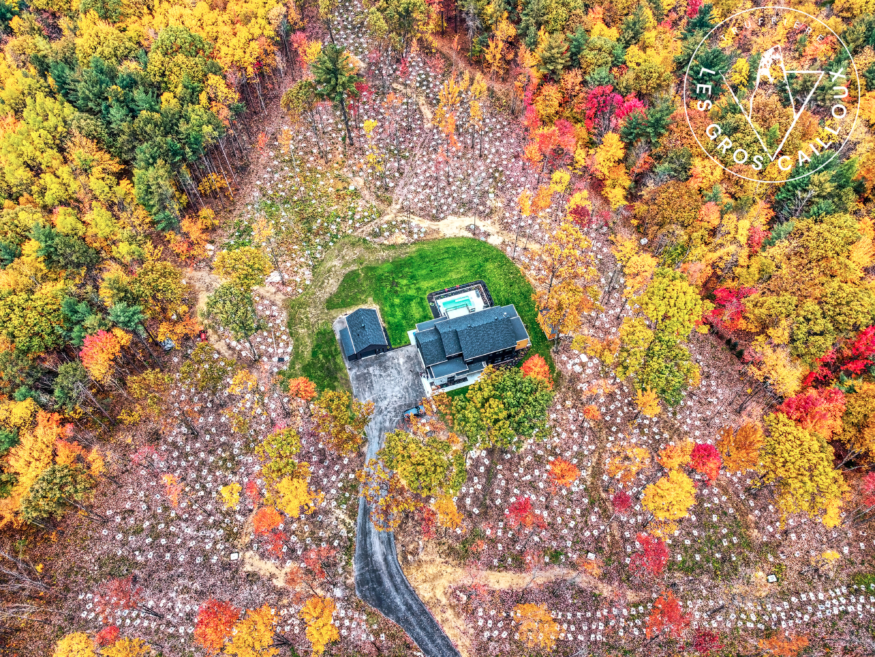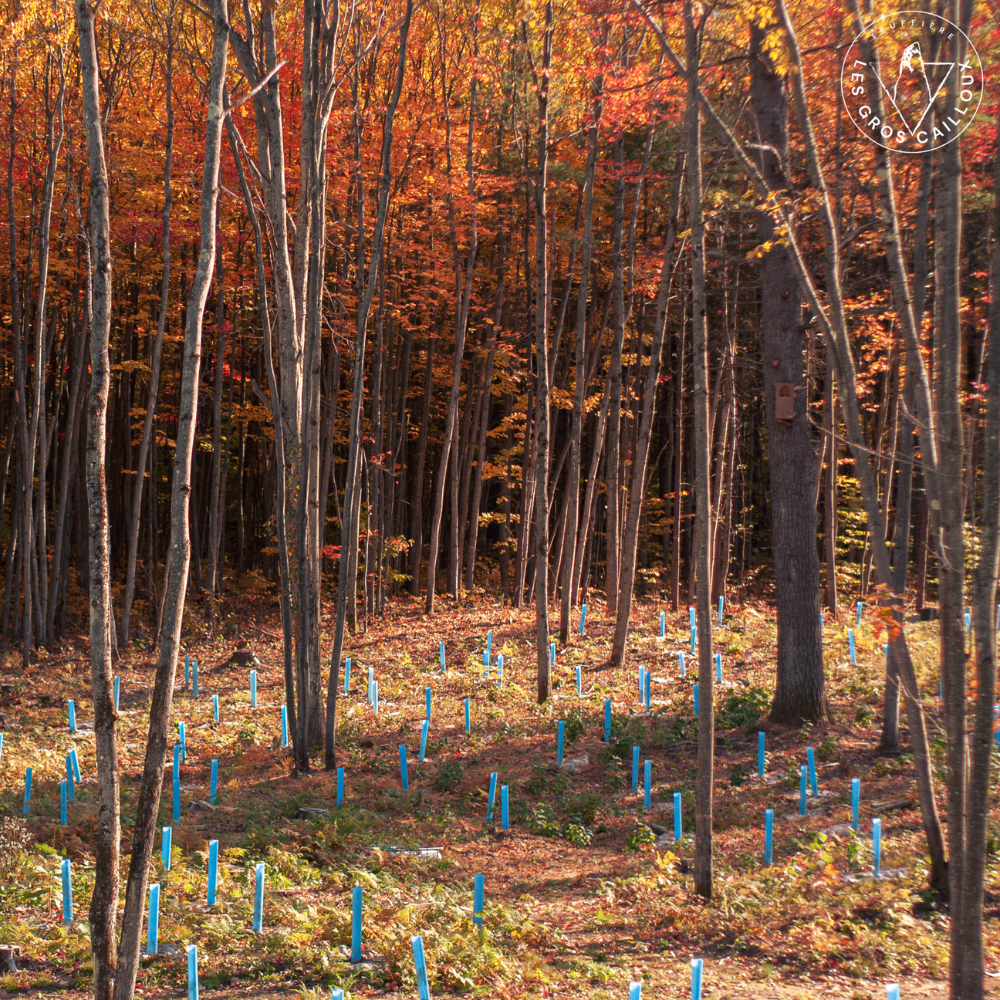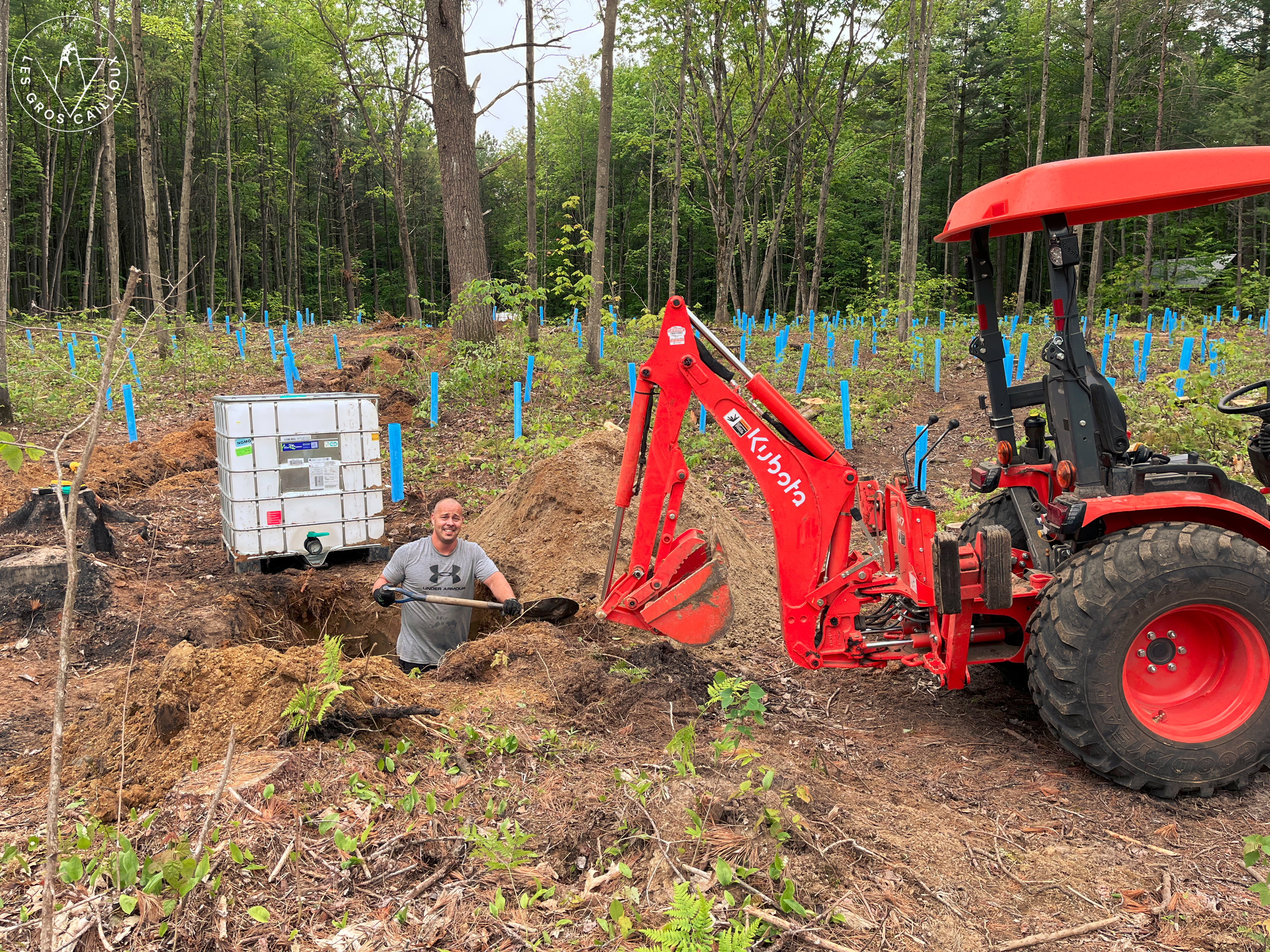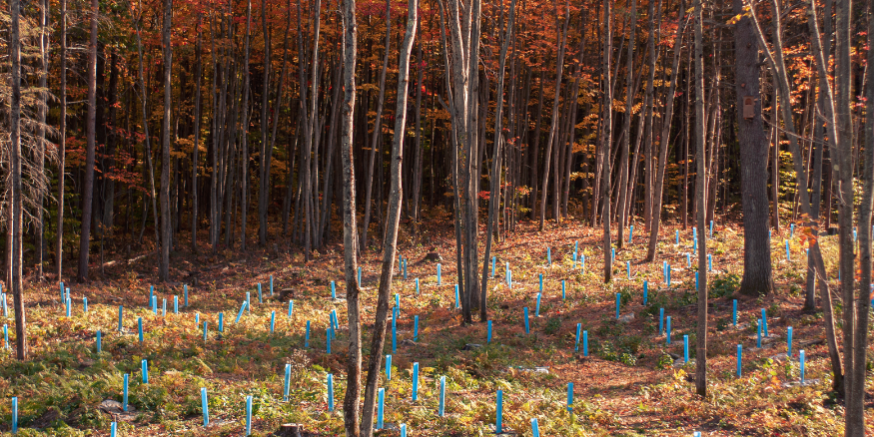Cindy and Denis's dream: the Truffière Les Gros Cailloux
Les Gros Cailloux truffle farm project in Mauricieis the story of Cindy and Denis, a couple with a passion for nature, gastronomy and new discoveries. The story begins in 2020, when they meet Jérôme Quirion co-founder of Truffes Québec, and discover the existence of the Appalachian truffle in Quebec.. It was the start of a great adventure for them !
The ideal forest for truffles
In the fall of 2020, Cindy and Denis purchased a nearly two-hectare parcel of forest that seemed to be the ideal environment for the Appalachian truffle. Filled with hope and opportunity, they decided to embark on the adventure of truffle farming, a booming booming industry in Quebec.

Preparing for truffle planting
In the summer of 2021, Cindy and Denis confirmed the truffle potential of their forest and began preparing it for truffle planting in the spring of 2022, in collaboration with Truffes Québec. They have the desire to produce a truffle in a forest-covered* environment as close as possible to the natural ecosystem of the Appalachian truffle.
In just a few months, they achieved a real tour de force, creating a magnificent 1.5-hectare high-density truffle field. They carefully planted nearly 1,650 truffle trees, 50 American hazelnut trees mycorhized with white truffle, and a mixture of red oak, bur oak and Norway spruce mycorhized with Appalachian truffle.
The challenges of high-density truffle farming
Cindy and Denis have chosen a different approach to planting their truffle trees. Unlike conventional planting, they opted for a random arrangement*, with no spacing or rows, to create a more natural forest visual at maturity. Although the density of 1.5 hectares per 1,650 trees is very high, their aim is to counter the competition from other fungi in the soil by overpopulating with mycorrhizal trees.
The couple are well aware of the risks associated with this type of plantation. They decided to take this risk because of their desire to produce truffles in a forest-covered environment. That said, they are aware that some people may criticize their choice. Despite the risks, their truffle farm is now ready to produce truffles of exceptional quality, thanks to their meticulous and innovative approach.


Biodynamic practices for a sustainable truffle farm
Cindy and Denis take a holistic approach to managing their truffle farm, taking into account the interactions between the different elements in their environment. Their biodynamic approach includes installing nesting boxes to control voles, as well as promoting the presence of wild turkeys to fertilize the soil and control insect pests. They also plan to install a barrier of endomycorrhizal fruit trees to protect their truffle beds from external contamination.
Although they have no intention of obtaining biodynamic certification, their respectful approach to the environment and biodiversity testifies to their commitment to sustainable truffle production.
A passion project for nature and gastronomy
TheTruffière Les Gros Cailloux was born of Cindy and Denis’ passion for nature and the pleasures of the table. It’s an innovative project that promotes the development of their region in an emerging market. They are determined to produce a quality truffle as close as possible to the Appalachian truffle’s natural environment.
The Truffière Les Gros Cailloux project is an inspiring story of passion and determination. Cindy and Denis are role models for nature and gastronomy enthusiasts, and their truffle farm will be a jewel for the region.

The most deserved congratulations!
Congratulations Cindy and Denis for your boldness and commitment to this exciting project!
We wish you success and expansion. Your passion for nature and the pleasures of the table will undoubtedly inspire others to embark on a similar project. Keep moving forward and good luck!
The Truffes Québec Team
